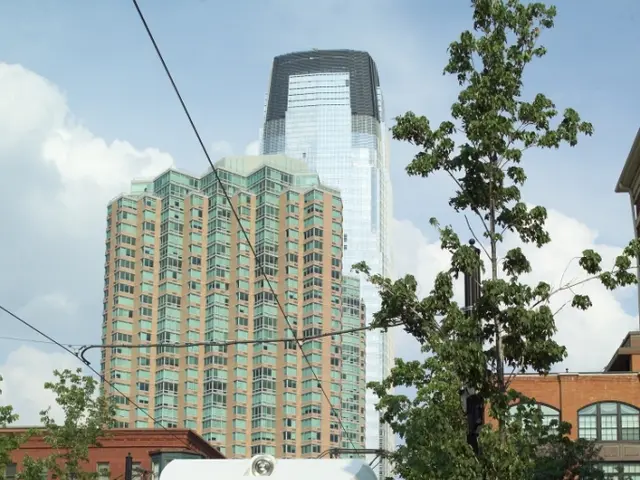Is it Possible to Make Energy-Efficient and Cost-Effective Low-Income Housing?
Advancing Energy-Efficient Housing in Ann Arbor, Michigan
The Ann Arbor Housing Commission is making strides in improving energy efficiency in low-income housing, with a focus on reducing energy use by at least 20% at Baker Commons, a public housing facility. This initiative is part of a broader trend in retrofitting and building new low-income energy-efficient housing across the United States.
According to a 2015 study, implementing energy-efficiency programs across various affordable housing types could result in cost-effective energy savings of 15 to 30%. The Ann Arbor Housing Commission's commitment to renovate over 400 units, including Baker Commons, aligns with this potential for significant energy savings.
The U.S. Department of Housing and Urban Development offers funds to housing agencies and building owners to update low-income housing, but the funding is limited and follows strict priorities. However, innovative strategies are emerging to overcome these financial challenges. For instance, new construction of affordable housing is capitalizing on the federal Low-Income Housing Tax Credit.
Retrofitting existing buildings is a key approach in meeting urban space and sustainability goals. Improvements to the building envelope, such as weatherproofing, sealing air leaks, upgrading insulation, and installing energy-efficient windows, are foundational retrofit strategies. Integrating renewable energy systems, like solar panels paired with battery storage, is also gaining traction to reduce energy costs and improve grid resilience for low-income households.
Municipal codes and financial incentives are accelerating retrofitting projects. Mandatory building performance standards coupled with public financial incentives, such as green bonds, energy performance contracts, and shared savings agreements, are mobilizing private capital and making investments more financially viable. However, inconsistent policies and unclear regulations remain a barrier in many markets.
Federal funding programs, such as those under the Inflation Reduction Act, allocate billions for whole-home retrofit packages focusing on building envelope upgrades and energy use reductions. State-led pilot programs address unique challenges, like upgrades for older manufactured homes, specifically benefiting low-income populations.
In Ann Arbor, initiatives like the renovation of Baker Commons and the construction of energy-efficient housing projects, such as West Arbor, are compliant with the standards of Enterprise Green Communities. Green building certification programs like Leadership in Energy and Environmental Design for Neighborhood Development, EarthCraft, and Enterprise Green Communities are being used in state plans that allocate the LIHTCs to developers.
The benefits of energy-efficient housing extend beyond environmental considerations. Stability in low-income housing can benefit the local economy. Residents of energy-efficient homes are more likely to stay in their homes instead of looking for cheaper alternatives, benefiting building owners. Moreover, improving energy efficiency can have positive effects on young children, according to a 2000 Children's Health Watch study.
New business models and strategies for encouraging adoption of energy-efficiency-boosting retrofits are beginning to surface. For instance, Uptown Lofts in Pittsburgh received tax credits in part by opting to meet Passive House Institute US energy-efficiency criteria. One-stop non-profit shops like Elevate Energy educate owners, utility companies, financial institutions, and potential investors on the non-energy benefits of energy efficiency upgrades in low-income units.
In conclusion, the low-income energy-efficient housing sector is advancing through the integration of energy retrofit systems combined with policy-driven incentives. However, success often hinges on coherent regulation and overcoming the financial challenges for investors and homeowners alike.
Sources:
- Realtor.com
- Smart Cities Dive
- Nixon Peabody
- Fortune Business Insights
- Utility Dive
- To ensure long-term financial security for low-income households, it's crucial to consider real-estate investments in energy-efficient housing, as retrofitting building envelopes with better insulation and energy-efficient windows can lead to substantial savings on energy bills.
- Investors looking for alternative means of financing energy-efficient housing in the housing-market could explore opportunities such as securing funding through federal programs like those under the Influx Reduction Act or state-led pilot programs that offer whole-home retrofit packages.




